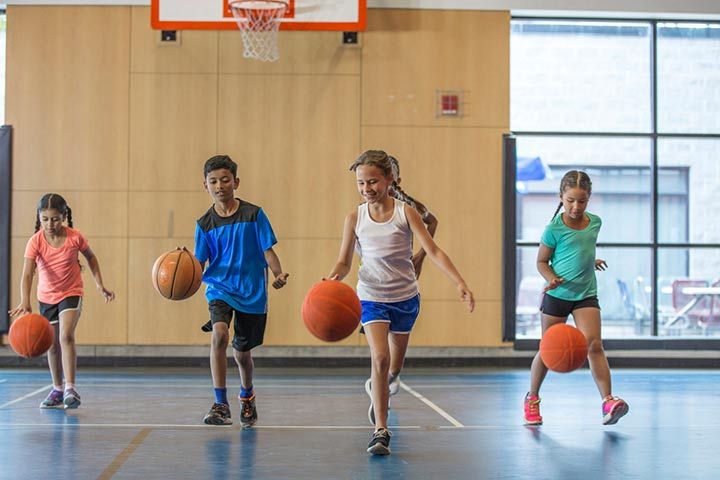When it comes to playing basketball, the ball itself plays a much bigger role than most people think. From how it bounces to how it feels in your hand, the right basketball ball can make all the difference in your game. Whether you’re practicing on the driveway, playing pickup games at the park, or training for a professional league, understanding your basketball ball is essential.
In this post, we’ll break down what makes a good basketball ball, explore different types, materials, sizes, and brands, and help you choose the perfect ball for your needs. Let’s dive into the world of basketball balls so you can dribble, shoot, and score with confidence.
What Is a Basketball Ball?
Definition & Basic Characteristics
A basketball ball is a spherical object specifically designed for use in the sport of basketball. It’s typically made of rubber, synthetic leather, or genuine leather, and must meet size and weight regulations depending on the level of play. The surface is textured for grip, and the inner bladder holds air for bounce.
Indoor vs Outdoor Basketball Balls
Indoor basketballs are usually made of leather or composite materials, providing better grip and control on hardwood floors. Outdoor balls are made of more durable rubber to withstand rough concrete or asphalt courts. Choosing the wrong type can affect your performance and shorten the life of the ball.
Official Basketball Sizes and Standards
Basketball balls come in different sizes, and choosing the right one depends on your age, gender, and competition level. Below are the official sizes recognized by major basketball organizations like the NBA, WNBA, FIBA, and youth leagues.
Size Guide by Organization
- Size 7 (29.5 inches) – Official men’s size used in the NBA, NCAA, and FIBA men’s competitions. Recommended for boys age 13 and older.
- Size 6 (28.5 inches) – Official women’s size used in the WNBA, NCAA women’s, and FIBA women’s competitions. Also great for boys aged 12–14.
- Size 5 (27.5 inches) – Common for youth players aged 9–11. Easy to handle for beginners.
- Size 4 (25.5 inches) – Used for children aged 5–8.
- Size 3 (22 inches) – Also called a “mini basketball,” great for toddlers and fun activities.
Comparison Table
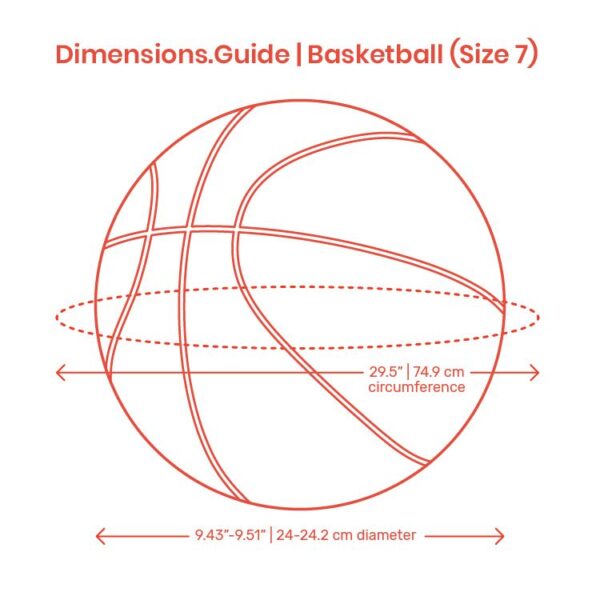
| Size | Circumference | Recommended For |
|---|---|---|
| Size 7 | 29.5 in / 75 cm | Men 13+, NBA, NCAA, FIBA |
| Size 6 | 28.5 in / 72 cm | Women 12+, WNBA, Youth boys |
| Size 5 | 27.5 in / 70 cm | Boys and girls aged 9–11 |
| Size 4 | 25.5 in / 65 cm | Kids aged 5–8 |
| Size 3 | 22 in / 56 cm | Toddlers / Mini games |
Choosing the correct size ensures better ball control, improved technique, and a more enjoyable playing experience—especially for younger players who are still learning the game.
Materials Used in Basketball Balls
The material of a basketball ball has a big impact on how it performs, how long it lasts, and where it should be used. Let’s take a closer look at the three most common types of materials used in basketballs today.
Rubber Basketballs
Rubber basketballs are the most affordable and durable option. They are ideal for outdoor courts like concrete or asphalt. While they may not offer the same feel or grip as leather or composite balls, rubber balls are perfect for beginners, casual play, and rough surfaces.
- Pros: Durable, inexpensive, weather-resistant
- Cons: Harder surface, less grip, less bounce control
Synthetic (Composite) Leather Basketballs
Composite leather basketballs offer a great balance between durability and feel. They’re designed to work well both indoors and outdoors. These are widely used in schools, recreational leagues, and for training. They mimic the feel of real leather without the high price tag.
- Pros: Soft grip, versatile use, consistent bounce
- Cons: Wears faster outdoors than rubber, not ideal for harsh concrete
Genuine Leather Basketballs
These are the top-tier basketballs used in professional leagues like the NBA. Genuine leather balls require a “break-in” period and are only meant for indoor hardwood courts. They deliver excellent grip and control once fully broken in.
- Pros: Superior feel, professional-grade performance, long lifespan indoors
- Cons: Expensive, indoor-only, needs break-in time
Choosing the right material depends on your playing environment, skill level, and how often you play. If you’re playing outdoors regularly, stick with rubber or composite. If you’re training seriously on indoor courts, invest in a genuine leather basketball.
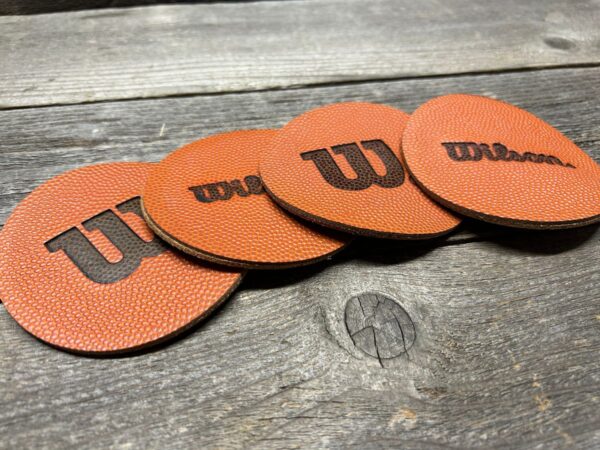
How to Choose the Right Basketball Ball
With so many basketball options out there, choosing the right ball can be confusing. Whether you’re a beginner or a competitive player, the perfect basketball depends on where you play, your age, and what feels comfortable in your hands.
1. Indoor vs Outdoor Use
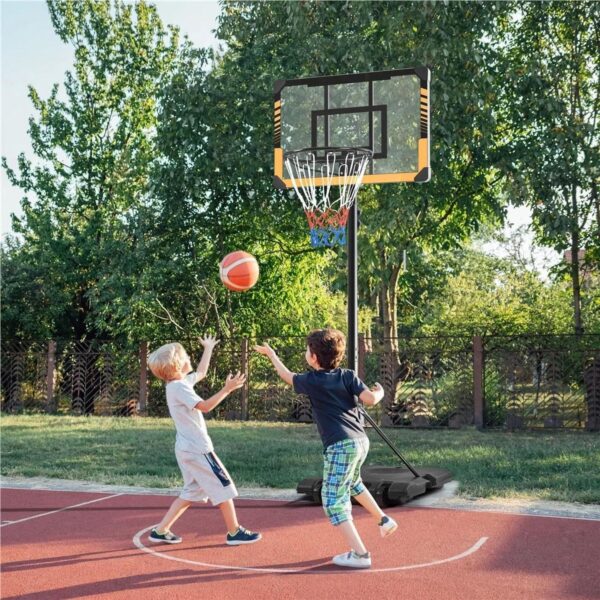
Where you play is the first thing to consider. Outdoor courts are rough and require a ball that can withstand wear and tear. Indoor courts are smoother and require better grip and feel.
- Outdoor courts: Go for rubber or composite leather
- Indoor courts: Choose composite or genuine leather for better control
- Both: Composite leather is the most versatile option
2. Age and Skill Level
Basketball size matters, especially for younger players. Using the right size helps with technique and reduces injury risks.
- Kids (5–8): Size 4 (25.5″)
- Youth (9–11): Size 5 (27.5″)
- Teens and Women (12+): Size 6 (28.5″)
- Men (13+): Size 7 (29.5″)
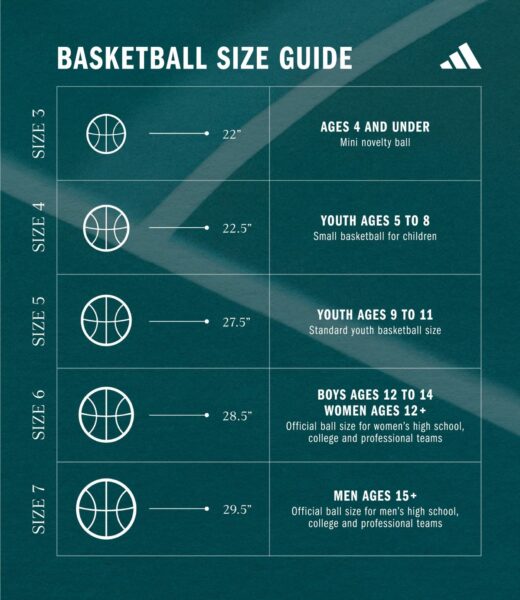
Coach helping young player choose the right basketball ball size
3. Grip, Bounce, and Feel
Pick up the ball and bounce it. A good basketball should have a consistent bounce, feel comfortable in your palm, and not slip easily. Look for features like:
- Deep channels: Improve grip and control
- Soft composite cover: Better feel and ball handling
- Air retention bladder: Keeps the ball inflated longer
Pro Tip:
Test the ball before buying if possible. If ordering online, read customer reviews and check for return policies.
Choosing the right basketball will improve your game, last longer, and make every dribble and shot more satisfying.
Top Brands and Popular Basketball Balls in 2025
Basketball brands have continued to innovate in 2025, offering better grip, durability, and feel. Whether you’re playing on the street or in a professional setting, choosing a reputable brand makes a big difference. Let’s break down the top-rated basketball ball brands and some popular models you can trust this year.
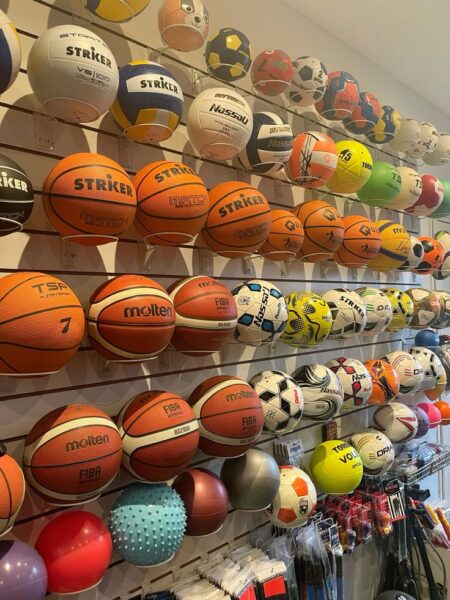
1. Spalding
Spalding is one of the most iconic names in basketball. As the former official ball of the NBA, it offers top-tier performance and durability.
- Top Pick: Spalding TF-1000 Classic ZK – Ideal for indoor games, great grip, and soft feel
- Best Budget: Spalding NBA Street Outdoor Ball – Made of durable rubber, perfect for outdoor courts
2. Wilson
Wilson is now the official game ball provider of the NBA. Their balls are praised for consistency and premium feel.
- Top Pick: Wilson Evolution – Excellent for indoor games, top-tier control and softness
- Pro Choice: Wilson NBA Official Game Ball – Genuine leather, used in official NBA matches
3. Nike
Known for innovation and design, Nike basketballs are a solid choice for casual and intermediate players.
- Best All-Around: Nike Elite Championship – NFHS-approved, composite leather, strong grip
4. Molten
Molten is the official basketball brand of FIBA. Their signature design features 12 panels for improved visibility and control.
- Top Pick: Molten GG7X – Used in international competitions, excellent grip and bounce
5. Other Brands to Watch
- Puma: Gaining attention for stylish, high-grip outdoor balls
- AND1: Popular in streetball culture, affordable outdoor options
- Under Armour: Durable and performance-focused designs
Tip: If you’re shopping online, make sure to check the product specs and whether the ball is for indoor, outdoor, or both. Reading verified reviews can help you avoid low-quality knock-offs.
How to Maintain Your Basketball Ball
A well-maintained basketball ball can last for years—keeping its bounce, grip, and shape intact. Whether you’re playing daily or only on weekends, taking proper care of your basketball ensures the best performance and saves you money in the long run.
1. Clean It Regularly
Dirt, dust, and grime can wear out the surface and reduce grip. Here’s how to clean your basketball the right way:
- Use a soft cloth or sponge with warm water and mild soap
- Wipe gently in circular motions
- Rinse off soap with a damp cloth
- Dry thoroughly with a towel – never store it wet!
2. Store It in a Cool, Dry Place
Leaving your basketball outside, in your car, or near heaters can damage the material. Rubber and leather are sensitive to temperature and moisture.
- Keep your ball indoors when not in use
- Don’t store it near windows or direct sunlight
- Use a ball rack or bag for added protection
3. Inflate It Properly
Overinflating or underinflating your ball affects its bounce and can damage the bladder.
- Recommended pressure: 7.5–8.5 psi
- Always use a proper pump with a needle
- Moisten the needle before inserting to avoid damaging the valve
4. Avoid Using the Wrong Ball on the Wrong Court
Indoor balls can wear out quickly on rough outdoor surfaces, and outdoor balls may feel too hard and slick on wooden courts. Stick to the right ball for the right court!
5. Know When to Replace
Even with the best care, basketballs don’t last forever. Signs it’s time for a new one:
- Peeling or cracked surface
- Lack of grip even after cleaning
- Deflation even after inflation
- Weird or inconsistent bounce
Taking just a few minutes to care for your basketball after each game can keep it game-ready for many seasons to come.
Common Mistakes to Avoid When Buying a Basketball Ball
Buying a basketball may seem simple, but many players—especially beginners—end up with the wrong ball that affects performance and comfort. Here are the most common mistakes to avoid when purchasing your next basketball ball.
1. Choosing the Wrong Size
Size matters. Using a ball that’s too big or too small for your age and skill level can affect ball handling and shooting form.
- Too big: Difficult for younger players to control
- Too small: Not suitable for competitive play
Tip: Always match your basketball to your age and league standard. See Section 3 for official size guidelines.
2. Buying an Indoor Ball for Outdoor Use
Leather and composite balls wear out quickly on asphalt and concrete. Using the wrong ball type not only shortens its lifespan but also affects grip and bounce.
- Indoor courts: Leather or composite
- Outdoor courts: Rubber or outdoor-rated composite
3. Ignoring the Playing Surface
Even outdoor courts vary—some are smooth, others rough. If you often play on rugged surfaces, choose a ball specifically made for high durability.
4. Going for Looks Over Function
Some basketballs look cool but lack quality. Just because a ball has a trendy design or flashy color doesn’t mean it performs well.
Always check:
- Brand reputation
- User reviews
- Material type
- Official certifications (e.g., NBA, FIBA, NFHS)
5. Skipping the Bounce Test
If you’re buying in-store, bounce the ball a few times. A quality basketball should have a consistent and responsive bounce. If buying online, read reviews mentioning bounce performance and air retention.
6. Overlooking Inflation Requirements
Some players never check PSI (pounds per square inch) and just pump until the ball “feels right.” That can damage the ball’s internal bladder or lead to poor performance.
Check the manufacturer’s recommendation—usually printed near the valve—and use a pressure gauge for accuracy.
By avoiding these common mistakes, you’ll make a smarter investment and enjoy better performance on the court—every dribble, pass, and shot will feel just right.
FAQ: Frequently Asked Questions About Basketball Balls
Can I use an indoor basketball ball outside?
Technically, yes—but it’s not recommended. Indoor basketballs, especially leather ones, can quickly wear down on rough outdoor surfaces like concrete or asphalt. If you need a ball for both environments, go with a composite leather ball rated for indoor/outdoor use.
How long does a basketball ball last?
It depends on the material, usage frequency, and care. A high-quality indoor basketball can last several years with proper maintenance. Outdoor balls, due to harsh surfaces, usually last 6–12 months with regular use. Always clean and store your ball properly to extend its lifespan.
What’s the difference between Size 6 and Size 7 basketballs?
Size 7 basketballs (29.5″) are the official men’s size used in NBA and FIBA. Size 6 balls (28.5″) are slightly smaller and lighter, used in women’s professional games and by youth players. Using the correct size improves ball control and shooting accuracy.
How do I know if my basketball is overinflated?
If the ball feels rock-hard, bounces too high, or feels too light during dribbling, it may be overinflated. The ideal pressure is usually between 7.5 and 8.5 psi. Use a pressure gauge for accuracy. Overinflation can damage the bladder or seams over time.
What’s the best basketball ball for beginners?
For beginners, a composite leather ball is a great choice—it offers a good grip, comfortable feel, and can be used indoors or outdoors. Brands like Wilson Evolution or Spalding React TF-250 are perfect for new players looking to develop skills.
Can I wash my basketball with water?
Yes, but avoid soaking it. Use a damp cloth or sponge with mild soap and water to gently wipe the surface. Rinse with a clean, damp cloth and dry immediately. Don’t submerge the ball or leave it wet, as moisture can damage the material and inner bladder.
Conclusion
Choosing the right basketball ball isn’t just about picking what looks cool — it’s about performance, comfort, and longevity. From understanding the different sizes and materials to knowing how to maintain and store your ball properly, every detail matters if you want to play your best.
Whether you’re a beginner looking for your first ball or a seasoned player seeking a performance upgrade, investing time in finding the right basketball will pay off every time you hit the court.
We hope this guide has helped you feel more confident in selecting the perfect basketball ball. If you’re still unsure which model is right for you, check out our reviews and top picks in Section 6, or leave a comment with your questions—we’re here to help!
Now go grab your ball, hit the court, and make every bounce count. 🏀

